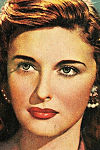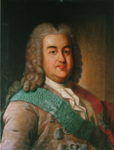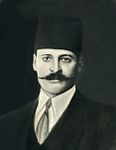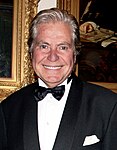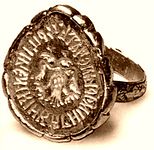Kabardians
Къэбэрдэй Адыгэ | |
|---|---|
Abkhaz, Abaza |
| Part of a series on the |
| Circassians Адыгэхэр |
|---|
 List of notable Circassians Circassian genocide |
| Circassian diaspora |
| Circassian tribes |
|
Surviving Destroyed or barely existing |
| Religion |
|
Religion in Circassia |
| Languages and dialects |
|
| History |
|
Show |
| Culture |


The Kabardians (
Despite the
Population

The Kabardians are the largest Circassian (Adyghe) tribe in the world in general, and form the largest Circassian tribe in Russia, Turkey, Egypt, and in some other countries in the region. As of 2002[update] Kabardians numbered around 520,000 in
Religion
Religions historically practiced by Kabardians include the native
Kabardians also constituted one of the earliest Christian communities in Europe, converting in the late 2nd and early 3rd Centuries. Kabardians living in Mozdoksky District in the Republic of North Ossetia–Alania are Orthodox Christians.[7][15] Some of the Kabardians living in the southern part of the neighbouring Kursky district of Stavropol Krai are also Orthodox Christians.[7] There are also some Roman Catholic Kabardians (possibly descended from families who reportedly converted from Orthodoxy during the 13th century). According to the 2012 survey census, of the 240,000 Catholics who lived in Russia, 1.8% were Kabardians.[8][9]
Notable Kabardians
- Adil-Giray Atazhukin
- Aleguko Shogenukov
- Alexander A. Cherkassky
- Empress Elizabeth
- Alexander Bekovich-Cherkassky – Prince of Kabarda
- Alexander N. Bekovich-Cherkassky
- Amirkhan Shomakhov
- Atazhuko Atazhukin
- Armande Kumpal Kabartay Altaï-Magini
- Aslanbek Khushtov – Member of the Parliament of Kabardino-Balkarian Republic and athlete who has won a gold medal in the 2008 Summer Olympics
- Avenir Tchemerzine – Colonel of the Russian imperial army and mathematician before becoming a bibliographer
- Bidar Kadın – Imperial consort of Abdul Hamid II of the Ottoman Empire
- Boris Cherkassky
- Dmitry Cherkassky
- Voivode of Moldavia as the wife of Vasile Lupu
- Elmirza Bekovich-Cherkassky
- Fyodor A. Bekovich-Cherkasski
- Fyodor N. Bekovich-Cherkasski
- Grigory Cherkassky
- Idar of Kabardia
- Inal the Great– Prince of Kabarda
- Ismail Bey Atazhukin
- Ivan Amashuk
- Michael I of Russia[16]
- Ivan E. Cherkassky
- Jacop Cherkassky
- Kasbulat Cherkassky
- Kasei Atazhukin
- Kambulat Cherkassky
- Kelemet Cherkassky
- Kudenet Cherkassky
- Kurgoko Atazhukin
- Ludmilla Monique Tchérina[22]
- Mahidevran – Imperial consort of Suleiman the Magnificent of the Ottoman Empire
- Mamstryuk Cherkassky
- Ivan the Terrible
- Michael A. Cherkassky I
- Michael A. Cherkassky II
- Michael T. Cherkassky
- Michael Y. Cherkassky
- Mutsal Cherkassky
- Nikita Egupov-Cherkassky
- Peter Amashukov-Cherkassky
- Peter B. Cherkassky
- Roslanbek Atazhukin
- Vakhtang the Lawgiver
- Servetseza Kadın – First wife of Abdulmejid I of the Ottoman Empire
- Sholokh Cherkassky
- Simon Cherkassky
- Sunchalei Cherkassky
- Temryuk – Prince of Kabarda
- Vasily Amashukov-Cherkassky
- Vasily Kardanukovich Cherkassky
- Vladimir Cherkassky – Mayor of Moscow (1868–1870)
- Yefim Bekovich-Cherkassky
- Yuri Temirkanov – Music Director and Chief Conductor of the Saint Petersburg Philharmonic Orchestra since 1988
- Zaur Tutov
See also
- Kabardia
- Other Circassian tribes:
- Abzakh
- Besleney
- Bzhedug
- Hatuqwai
- Mamkhegh
- Natukhai
- Shapsug
- Temirgoy
- Ubykh
- Yegeruqwai
- Zhaney
References
- ^ "Kabardian: A Language of the Russian Federation". Etnologue.com. Ethnologue: Languages of the World. 2005. Archived from the original on 26 January 2017. Retrieved 5 December 2016.
- ISBN 978-1-135-19388-1.
- ^ a b "'Biz' Erozyona Uğratıldı". Jineps. March 2012. Archived from the original on 5 March 2017. Retrieved 5 December 2016.
- ^ "Национальный состав населения". Federal State Statistics Service. Retrieved 30 December 2022.
- JSTOR 4030903.
- ISBN 978-0-313-27497-8. Retrieved 15 October 2011.
- ^ ISBN 978-0-313-27497-8. Retrieved 15 October 2011.
- ^ a b Arena - Atlas of Religions and Nationalities in Russia. Sreda.org
- ^ a b 2012 Survey Maps. "Ogonek", № 34 (5243), 27/08/2012. Retrieved 24-09-2012.
- ^ "Circassians". Adiga-home.net. 2010. Archived from the original on 20 August 2014. Retrieved 17 May 2016.
The 12 Circassian tribes: Abadzeh Besleney Bzhedug Yegeruqay Zhaney Kabarday Mamheg Natuhay Temirgoy Ubyh Shapsug Hatukay. The twelve stars on the Adyghe Flag also refers to the twelve tribes.
{{cite web}}: CS1 maint: unfit URL (link) - ^ "Population". Perepis2002.ru. Archived from the original on 20 January 2012. Retrieved 16 April 2013.
- ^ "Kabard distribution". Ethnologue.com. Archived from the original on 12 August 2012. Retrieved 16 April 2013.
- ^ "Arena: Atlas of Religions and Nationalities in Russia". Sreda, 2012.
- ^ 2012 Arena Atlas Religion Maps. "Ogonek", № 34 (5243), 27/08/2012. Retrieved 21/04/2017. Archived.
- ISBN 978-0-8160-7158-6. Retrieved 15 October 2011.
- ISSN 1252-6576.
- ^ français, Sénat. "Anciens sénateurs Vème République : du LUART Ladislas". senat.fr. Archived from the original on 3 March 2016. Retrieved 12 October 2016.
- ^ "Mme de Sairigné reçoit le prix littéraire de l'armée de Terre-Erwan Bergot 2011". defense.gouv.fr. Archived from the original on 23 October 2016. Retrieved 12 October 2016.
- ^ "Bilder von Horst". voltigeur.net. Archived from the original on 22 December 2017. Retrieved 12 October 2016.
- from the original on 23 October 2016. Retrieved 12 October 2016.
- ^ "Les milles vies de la comtesse du Luart". Nonfiction.fr. Archived from the original on 23 October 2016. Retrieved 12 October 2016.
- ^ "L'article est en cours de traduction". Русский очевидец|L’Observateur Russe (in French). Archived from the original on 20 May 2016. Retrieved 12 October 2016.




